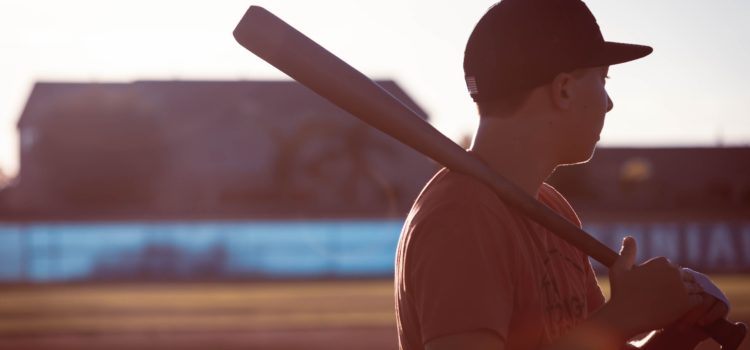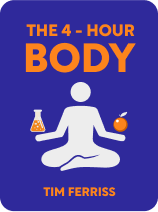

This article is an excerpt from the Shortform book guide to "The 4-Hour Body" by Timothy Ferriss. Shortform has the world's best summaries and analyses of books you should be reading.
Like this article? Sign up for a free trial here .
Who is The 4-Hour Body author? How did Tim Ferriss improve his body by studying with professional athletes?
The 4-Hour Body author Tim Ferriss spent years studying performance science, including sports performance. He trained with athletes from several professional sports, including jumping, swimming, and baseball.
Read more about The 4-Hour Body author and his training in three sports.
The 4-Hour Body Author: Training Overview
Author Tim Ferriss has spent years studying how to improve the human body—he interviewed and trained with experts, studied scientific literature, and tried out what he learned on himself. In The 4-Hour Body, he distills the most effective 2.5% of what he discovered into programs you can use to improve six aspects of your body: losing fat and gaining muscle, enhancing sex, improving sleep, managing injuries, improving sports performance, and living longer.
The final sport-specific skills the author experimented with are jumping, swimming, and hitting baseballs.
Jumping
To learn to jump higher, The 4-Hour Body author once again trained with Joe DeFranco. One of the tests in NFL tryouts is the vertical jump, which is a measure of how high someone can jump from a standstill. The height is measured using a Vertec, which is a pole with sticks. When an athlete hits a stick, it rotates, marking how high they’ve jumped. Jump height is measured from the tips of the fingers when the arms are stretched over the head so people of different heights can be fairly compared.
With the help of DeFranco, the author improved his jump height three inches in a single 20-minute session using the following protocol:
1. A warm up consisting of:
- 10 jumping jacks
- 10 jumping jacks with the arms opening and closing in front of the chest instead of above the head
- 5 side lunges per side
- 5 reverse lunges per side
- 10 forward leg swings per side
- 10 backward legs swings per side
- 20 seconds of pogo jumps
2. Correct squat position. To squat properly before jumping, your feet should be placed at just slightly less than hip-width. As you squat, you need to maintain a flat back, and you need to be watching the Vertec sticks throughout the squat, except at the very bottom.
3. Good shoulder drive. Shoulders give you up to 20% of your jump. To best use them, start with hands over your head. As you squat, swing your arms down as fast as you can and then swing them back up just as fast as you rise from the squat and jump.
4. Well-timed contact with sticks. You need to hit the sticks at the top of your jump, so your arm should be retracted as you’re going up (like you’re hitting a volleyball). Extend your arm only once you’ve reached the top.
5. Turned-off hip flexors. The hip flexors restrict leg extension. To shut them off, stretch each hip flexor, starting with the non-dominant side (left side if you’re right-handed), for 30 seconds, 30 seconds to two minutes before you attempt your jump. (Note: Static stretching—holding a stretch for more than 10 seconds—before training can increase the risk of injury because it lengthens muscles and tissues, which decreases strength. The hip flexors are the only muscles DeFranco recommends stretching statically because the goal is to weaken them to increase jump height.)
The 4-Hour Body Author Learned Swimming From a DVD
To learn to swim, The 4-Hour Body author didn’t work with a coach. Instead, he learned Terry Laughlin’s Total Immersion swimming technique from a book and DVD. Before learning the method, he could only swim two lengths of a pool before becoming exhausted. After practicing Total Immersion for only two months, The 4-Hour Body author swam a mile in the open ocean.
You too can learn the Total Immersion method for swimming freestyle. Here are eight tips from the author:
- Use your shoulders to propel yourself. Instead of thinking about kicking your legs hard or pulling hard with your arms, think about rolling your shoulders. Use your shoulders to push your arms underwater instead of leaving them at the surface.
- Keep your head in the same position as if you were walking. Look straight down.
- Swim on your sides. Instead of thinking about freestyle as swimming on your stomach, think of it as switching from side to side. This will help you reach farther with every stroke.
- Push your fingers into the water at a sharp downward angle. This will force you to push your hands deep into the water.
- Make strokes long. The fewer strokes you can do per lap, the more energy you’re saving.
- Breathe properly. Breathe out while your face is in the water, and when it’s time to inhale, turn your whole body out of the water, not only your face. End your breath when your hand passes your goggles. When you start training, breathe on every second stroke, and once that’s easy, switch to every third stroke.
- Practice the hand-swapping drill, which reinforces many of the techniques above. To do the drill, keep your front arm fully stretched until your other arm hits the water.
- Remember that you’re learning a skill, not working out. Prioritize technique over getting your heart rate up. If you get tired, take a break and figure out what you’re doing inefficiently.
The author has a few additional tips to make swimming more pleasant:
- Avoid board shorts because they create drag.
- Use high-quality goggles that don’t leak and don’t need frequent tightening. The author recommends the Aqua Sphere Kaiman.
- Begin training in a shallow, short, pool. You’ll find it easier to prioritize technique when each lap is shorter.
Hitting Baseballs
After tackling jumping and swimming, the author trained with Jaime Cevallos, a Major League Baseball coach, to improve his baseball swing. Among others, Cevallos trained Ben Zobrist, who started out unremarkable by hitting three home runs out of around 300 plate appearances. After training with Cevallos, Zobrist hit 17 home runs out of his next 300 plate appearances.
There are three important positions involved with the Cevallos swing:
Position #1: The cushion is the position after taking a step but before swinging. The toes and knees of the front foot should turn out 60 degrees. The angle between the hips and shoulders should be 25 degrees. This angle creates torque and helps the batter maintain form if swinging at slower pitches.
Position #2: The slot is the position just before swinging in which the batter’s back is still straight but her back elbow drops. This position allows the batter to use her legs and hips to whip the bat as she swings. The angle between the tip of the bat and the elbows should be as small as possible to increase bat speed. To help keep the back straight, think about keeping distance between the shoulders and ears.
Position #3: The impact is the position from which the batter hits the ball. The angle of the elbow should be 80 degrees or smaller and the angle between the wrist and the bat should be 180 degrees or larger. To create the most speed, straighten the front leg, which will drive the back hip forward.
Using these positions, particularly the impact position, has three benefits:
- It’s physically impossible to reach outside pitches because the swing is close to the body. This means that batters can’t be tempted into going after lousy pitches.
- There’s more time to assess the pitch. In this swing, the bat doesn’t hit the ball until it’s already crossed part of the plate, which gives batters a little extra time to decide whether or not to swing.
- The batter is most consistent. In the swing, there’s a longer period in which the bat is in position to hit the ball, which increases the chances of making contact.
To practice these concepts:
- Hit a heavy bag with the bat and as you make contact, freeze. Check your angles. Practice for ten minutes.
- Hit balls off a tee, continuing to practice your angles.

———End of Preview———
Like what you just read? Read the rest of the world's best book summary and analysis of Timothy Ferriss's "The 4-Hour Body" at Shortform .
Here's what you'll find in our full The 4-Hour Body summary :
- How to do the least amount you need to do for the results you want
- Why you need a cheat day in your diet
- How to improve everything about your body, including sleep, sex, and longevity






